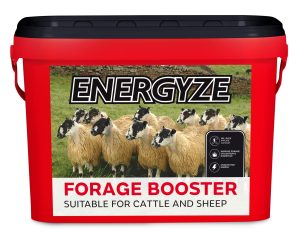By Jill Hunter, Beef & Sheep Nutritionist
Brassicas such as rape, kale or hybrids of the two as well as swedes and turnips are a fantastic way of extending cattle and sheep grazing into the back end of the year and through the winter months. It’s cost-effective, while also maximising animal growth rates and fleshing.
High dry matter yields can be grown and then grazed in the field, offering an easy way of boosting yield from your farm while reducing bought in feed costs and with little kit required – except an electric fence and some willing volunteers with warm gloves and waterproofs!
Of course, these crops aren’t suitable on every farm or in every field, however they can be useful as a break crop to benefit soil structure as well as boosting animal performance. Consulting an agronomist before growing crop would be recommended, to give the best chance of maximising yield. On a practical level, consider:
- Fields which are free draining and have a run-back area for stock to get off the bare soil once grazing
- If there is sufficient shelter for livestock to keep them content
- Leaving a break at regular intervals, to provide a natural path for the electric fence, so time doesn’t have to be spent moving crop which is touching the bottom wire
When batching stock for grazing forage crops, consider which stock will be able to utilise the crop the best. Avoid cows and ewes too close to calving and lambing and make sure youngstock are fit and able to withstand the weather conditions. E.g. growing cattle should be over 300kg if outwintering on forage crops and lambs should be fit, healthy and not lame. Any older animals which may not have a full set of teeth, should be avoided as they are unlikely to be able to eat enough to maintain their body condition.
As is the same with any change to a ruminants diet, the transition onto forage crops should be gradual, to allow the rumen bugs time to adjust. Nitrate poisoning, bloat and clostridial diseases are all higher risk when crops are not gradually introduced and can have a detrimental impact on animal performance. It is also recommended to offer a buffer of forage to make up around 25% of the diet dry matter. This could be longer, stemmy grasses around field margins or run-back area, a bale of straw or some silage. This long fibre helps to keep the forage crop inside the rumen long enough for the rumen bugs to break it down fully and for the energy and protein to be absorbed and used. Think about this if you usually find lambs scouring 1-2 weeks after being introduced to forage crops.
The Harbro team are on hand to measure the crop and help calculate the dry matter available, so an accurate estimate can be made of how far and how often to move the electric fence, depending on the class of stock and crop available.
As well as the many benefits of feeding forage crops, it is worth keeping in mind the health issues which can occur when feeding forage crops, to ensure preventative measures can be put in place to avoid poor performance.
Goitre is a common condition where brassicas and root crops in particular contain compounds which stop animals from absorbing iodine from their feed. This, coupled with the fact brassicas are already low in iodine, leaves animals at high risk of being deficient in iodine. This can interfere with hormone production, cause low growth rates, infertility and stillbirths.
To prevent animals becoming low in iodine, animals should be supplemented with extra iodine ahead of and during grazing brassicas. This could be either:
- A high iodine lick bucket e.g. Energyze Forage Booster
- A high iodine bolus g. United Farmer Country Bolus
Finally, once the field of crop is nearly done, it is important to start offering hard feed in advance to finishing animals. This allows the rumen time to adapt to new feed, prevents a growth stunt and also prevents animals from gorging themselves on hard feed.
Product Spotlight – Energyze Forage Booster
Molassed feed bucket to provide instant energy and essential nutrients to support rumen function and forage digestion. Contains elevated levels of iodine to support lambs on forage crops, as well as B vitamins to reduce risk of CCN and increase their appetite.

